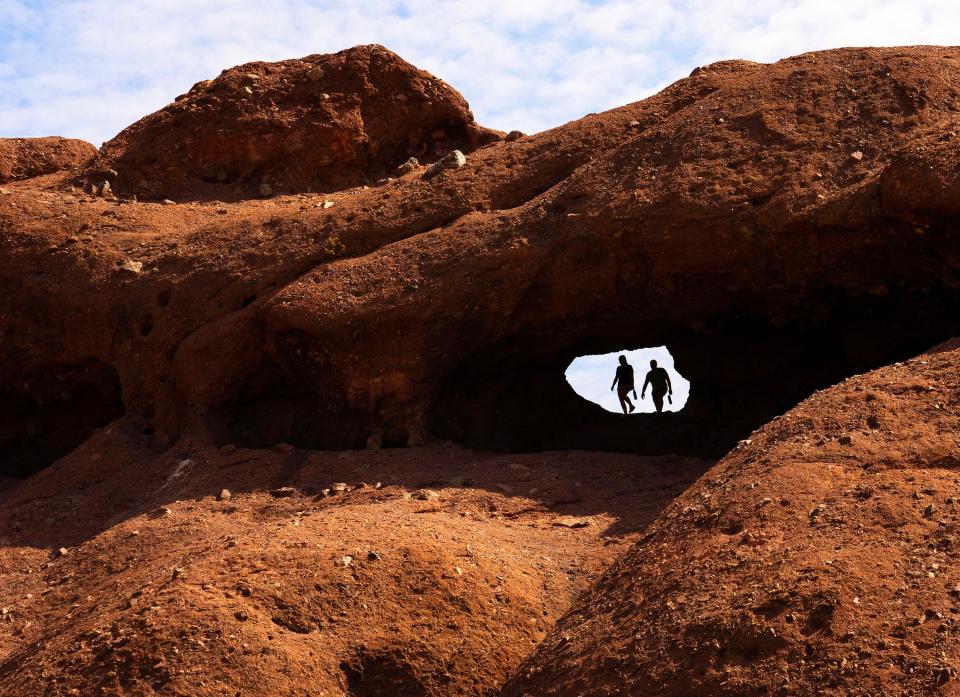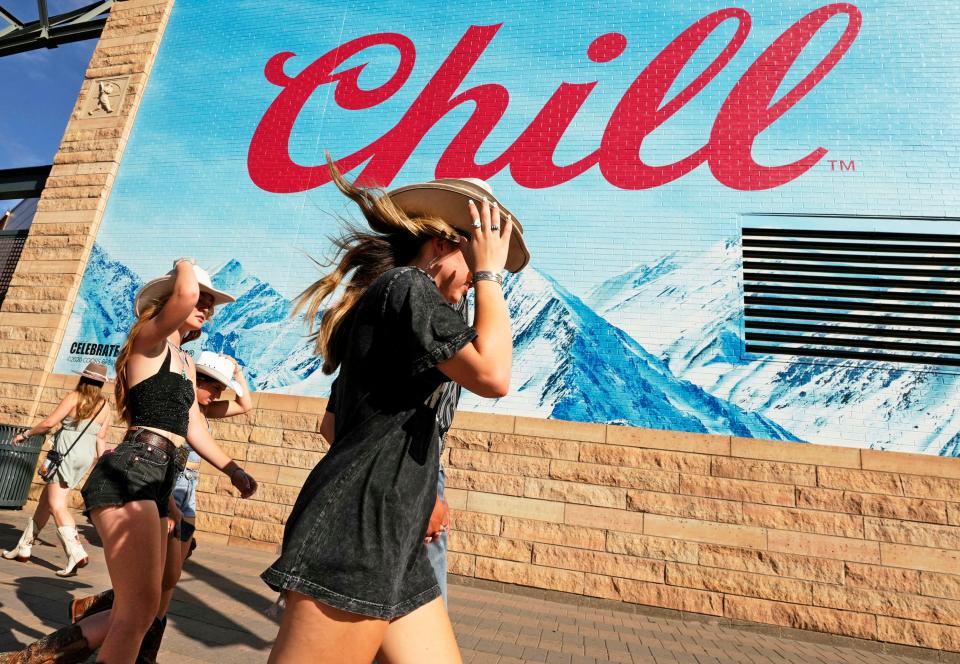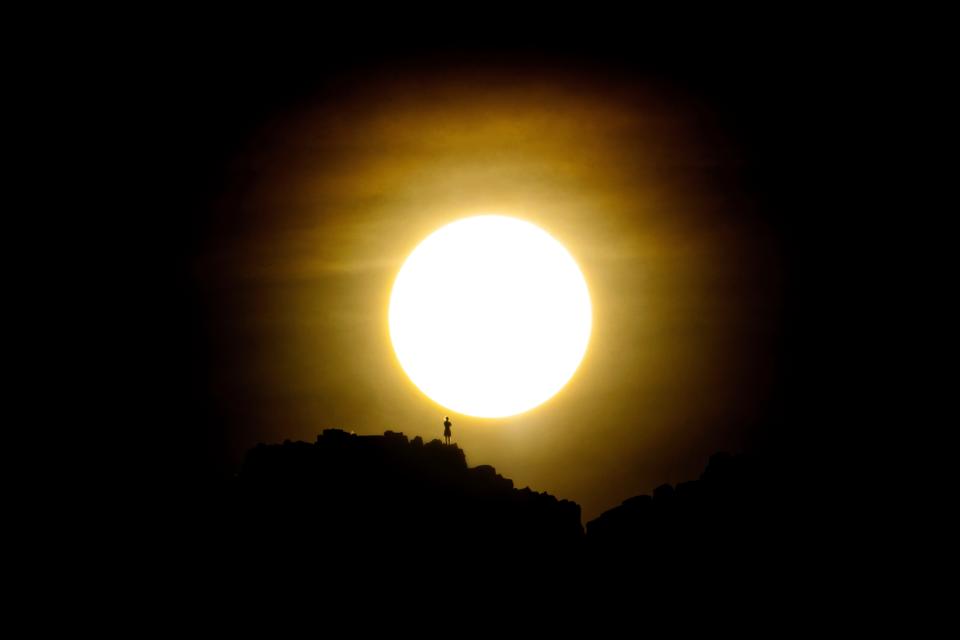While global climate action stalls, cities can adapt to ease heat effects, study finds
The best strategy for limiting future extreme heat exposure caused by climate change depends on where in the U.S. you live, a new study by researchers at Arizona State University has found. But the optimal outcome, the research underscores, still requires a combination of mitigation and adaptation.
In Tulsa and Portland, city planners can expect to see strong results from installing more cool and evaporative roofs and tree shade regardless of how much the global community scales back fossil fuel use by the end of the century. Residents of Denver wanting to avoid heat waves, on the other hand, will be more at the mercy of average temperature increases regardless of their investments in citywide cooling.
Phoenix and Tucson both fall somewhere in the middle. Researchers expect end-of-century heat exposure per Arizona resident to be roughly equally influenced by the progression of global warming and local efforts to prepare.
The paper, "Quantifying the decrease in heat exposure through adaptation and mitigation in twenty-first-century U.S. cities," published Monday in the peer-reviewed journal "Nature Cities." It factors in projected population increases in six regions and 47 metropolitan areas to estimate how future global climate mitigation scenarios and benefits of local adaptation actions will influence end-of-century changes in the number of "person-hours" of extreme heat exposure, or the local increase in hours of extreme heat multiplied by the number of people who will be living in that area.
Lead author Matt Georgescu, who directs ASU's Urban Climate Research Center, says that, while the work provides new insight into the relative advantages of preparing for versus slowing climate change in different locations, the most important take-home message is still that both are vitally important, perhaps just at slightly different intensities and on different timelines based on where people live.
"Local adaptation can provide very meaningful benefits at the scale that folks live. We already knew that, but I think we've been missing a quantitative assessment that contrasts adaptation versus mitigation. We have that now," Georgescu said. "However, we must keep in mind that (adaptation) is not a substitute for the overall objective, which is to reduce emissions of greenhouse gases."

Adaptation versus mitigation
Options for addressing the consequences of climate change typically fall into two camps. Mitigation largely refers to efforts to shift energy generation away from coal, oil and natural gas-based sources to scale back emissions of greenhouse gases that trap heat from the sun in the atmosphere and lead to a rise in average temperatures.
Adaptation encompasses the structural, technological and societal changes that help localities prepare for and reduce damage from more frequent and intense heat waves, wildfires, sea level rise and other anticipated outcomes of a changing climate.
Due to the complexity of both of these options and of climate modeling in general, most previous studies have considered the benefits of mitigation and adaptation activities separately, Georgescu said, despite the fact that experts assert the world must pursue both paths simultaneously.
"We thought it would be really useful to emphasize the importance of local adaptation by contrasting (it with mitigation), to highlight benefits or co-benefits and also emphasize the importance of planning now," Georgescu said.
Heat and housing investigation: More homes mean more heat. Can new building codes help save metro Phoenix from disaster?
They started by calculating how "person-hours" of heat exposure would increase by the end of the century in six U.S. regions if greenhouse gas emissions continue unabated. They found that all parts of the country except the Northwest will "undergo a substantial increase" in heat exposure, with the Northeast and the Southeast regions seeing the most dramatic changes.
Next they calculated how drastically "person-hour" heat exposure would lessen under scenarios in which aggressive global mitigation (greenhouse gas reductions) or local adaptation (cool and green roofs plus tree shade) options were pursued, or both. The combination could "nearly entirely offset" climate-driven increases in heat exposure over time, the researchers found, for residents of Northeastern and Midwest cities.
Across all six regions, greater relief would result from mitigation alone than from adaptation alone, they determined. But a synergy of the two clearly yielded the most beneficial outcomes.
In the Southwest, Georgescu and colleagues found that between around 20% and 35% of annual heat exposure, in end-of-century "person-hours," could be avoided through adaptation and between around 30% and 45% could be avoided through mitigation.
If both paths were pursued, Southwestern metropolitan regions like Phoenix could reduce around 55% to 70% of the expected increase in per-person heat exposure.

The extreme heat situation in the Southwest
Across the board, Georgescu and his team found that cities in the Southwest did not stand out in terms of either expected heat increases or potential for mitigation or adaptation activities to slow that rise. But he acknowledged what many Phoenix residents know well — the heat here hits different.
AZCentral explains: Heat records toppled like dominoes this year. How do we know which numbers tell the story?
Many studies estimating heat impacts under future climate scenarios look at how much average temperatures in an area will increase over current baseline normals. But with Phoenix already setting records for hottest big city in America, hottest month in a U.S. city and many of the highest extreme temperatures outside of Death Valley, the mercury doesn't have to rise much here to produce drastic consequences.
“The vulnerability is likely greater in the southern tier states than the northern tier states," Georgescu said. "If a major heat event were to happen here, I think it would be devastating in terms of loss of life."
This past summer, record-breaking temperatures strained Phoenix's energy grids and medical providers and contributed to a heat-associated death toll that far outpaced that of previous years, with nearly 600 Maricopa County lives lost this year. Georgescu was a co-author on another study published in May that estimated a simultaneous blackout and five-day heat wave in Phoenix could send more than 800,000 people — half the city — to the emergency room with heat-related health issues and kill more than 13,000 people.
Dire warning: Phoenix is not prepared for a simultaneous heat wave and blackout, new research shows
“In other words, we’re very much on the edge here," he said. "When you combine such a climatic change with a situation where we can’t go indoors (or don't have access to air conditioning), it's a problem."
Time to get serious
The new study also highlights that, in addition to yielding varying benefits at different geographic scales, mitigation and adaptation operate on different timescales, much to the frustration of climate activists.
Mitigation must happen globally to be truly effective. Efforts to negotiate this often happen at international meetings like this year's United Nations Conference of the Parties on Climate Change, known as COP28, which just wrapped up in Dubai last week.
Common outcomes have been much-hyped pledges that see countries promising to reduce fossil fuel use but, historically, not meeting the agreed-upon targets. (See the 2015 Paris Agreement or basically any other international climate treaty.) The glacial pace of global climate mitigation has spurred a rise in climate protests where young people skip school or superglue themselves to artwork.
"Even in the best scenario, COP28 is not going to lead to a reduction in emissions right this moment," Georgescu said. "But at the city level, there is the capacity to do something now. In these set of simulations, we qualify and we quantify what the potential benefits are."
Read our climate series: The latest from Joan Meiners at azcentral, a column on climate change that publishes weekly
Adaptation can happen at any scale, any time, anywhere. And with its notorious heat, Phoenix is already a leader in urban adaptation, as evidenced by the creation of its Office for Heat Response and Mitigation and other leaders consulting Phoenix Mayor Kate Gallego on how to prepare for worsening extremes.
Still, as the paper points out, more can be done. If Phoenix remains one of the nation's fastest-growing metropolitan areas, getting those "person-hours" of heat exposure under control will require an acceleration of local and international action.
Georgescu installed solar panels on his house in April and welcomed the lower electricity bills when this summer's heat extremes hit. He says his team's "person-hour" calculations, based in part on urbanization and population growth estimates made by the Environmental Protection Agency's Integrated Climate Land-Use Scenarios dataset, could change if ongoing record-breaking heat slows Phoenix's appeal to newcomers.
"But for eight, nine months out of the year, this place is still pretty awesome," he said. "If you go to Chicago or any other place, for two, three months out of the year, you probably want to be somewhere else."

So Phoenix and other cities would be wise to prepare. That will involve pursuing local adaptation strategies like cool and green roofs and more tree shade — perhaps at different intensities for each city, guided by this new study — as well as participating in the global reduction of fossil fuel use.
"The long term solution has been and will remain the reduction of emissions of greenhouse gases," Georgescu said. "But while that's happening, we can't simply wait."
Joan Meiners is the climate news and storytelling reporter at The Arizona Republic and azcentral.com. Before becoming a journalist, she completed a doctorate in ecology. Follow Joan on Twitter at @beecycles or email her at joan.meiners@arizonarepublic.com. Read more of her coverage at environment.azcentral.com.
Sign up for AZ Climate, The Republic's weekly climate and environment newsletter.
Support climate coverage and local journalism by subscribing to azcentral.com at this link.
This article originally appeared on Arizona Republic: Cities' ability to adapt to ease extreme heat varies, study finds

